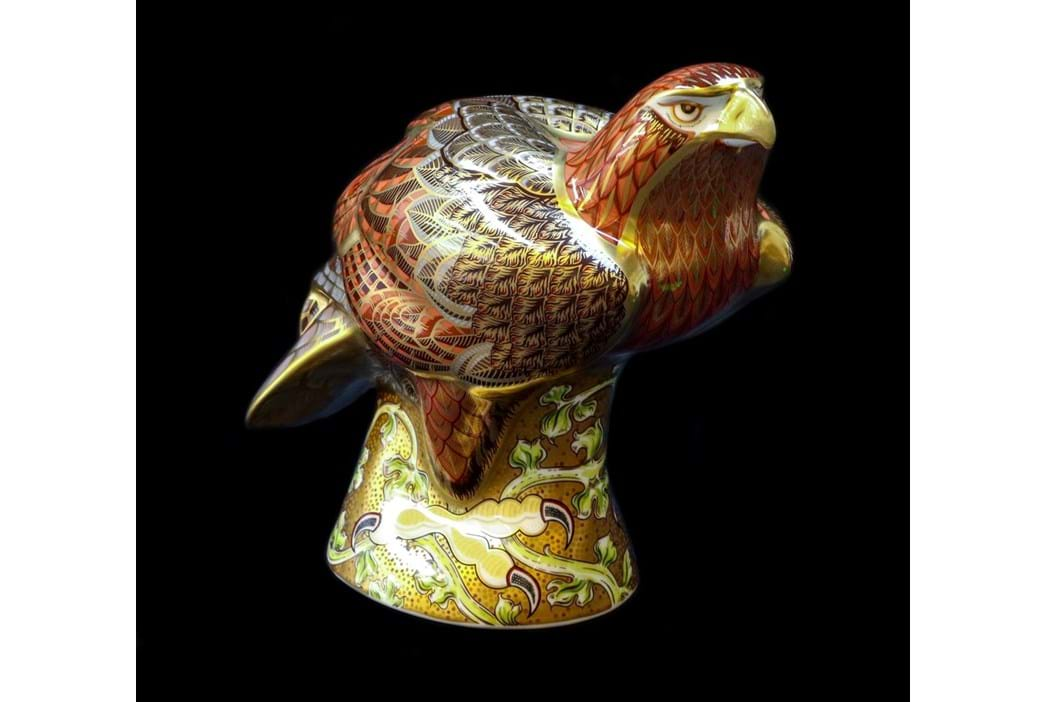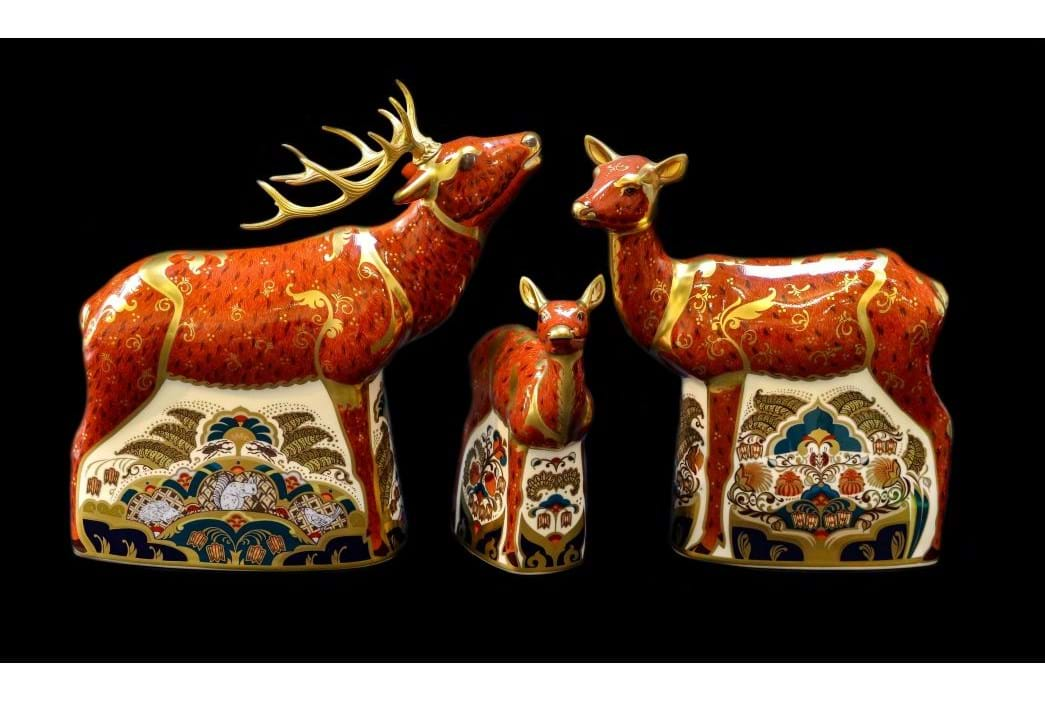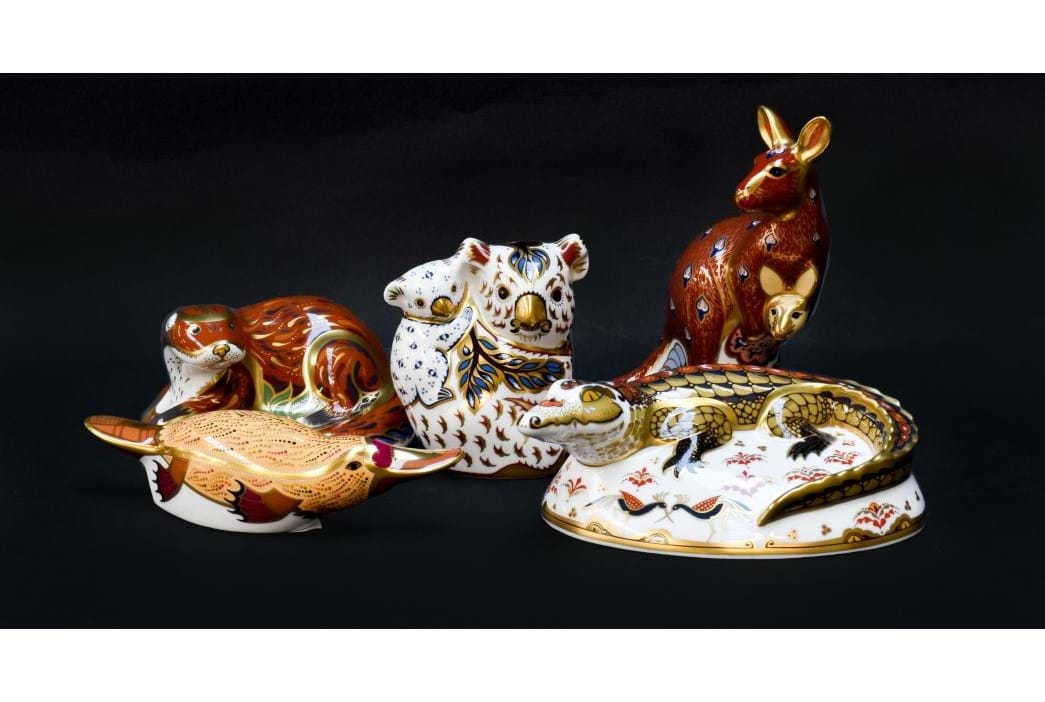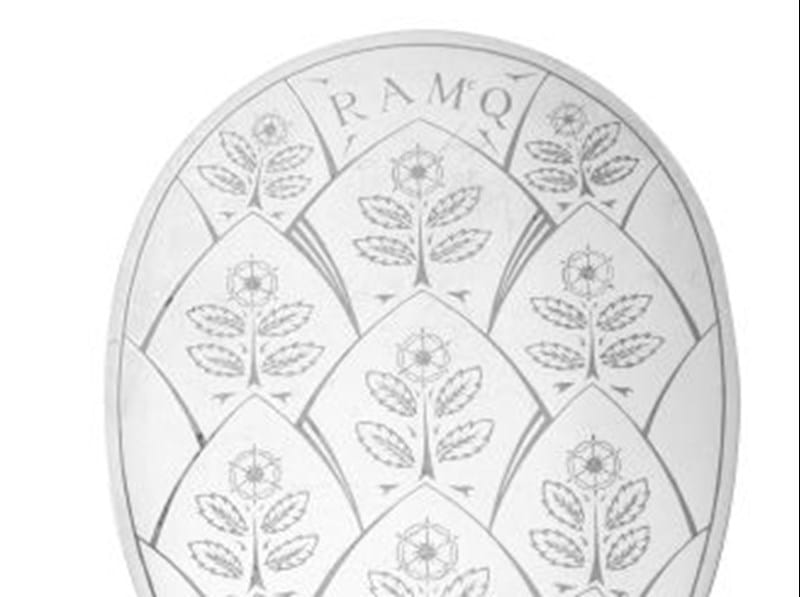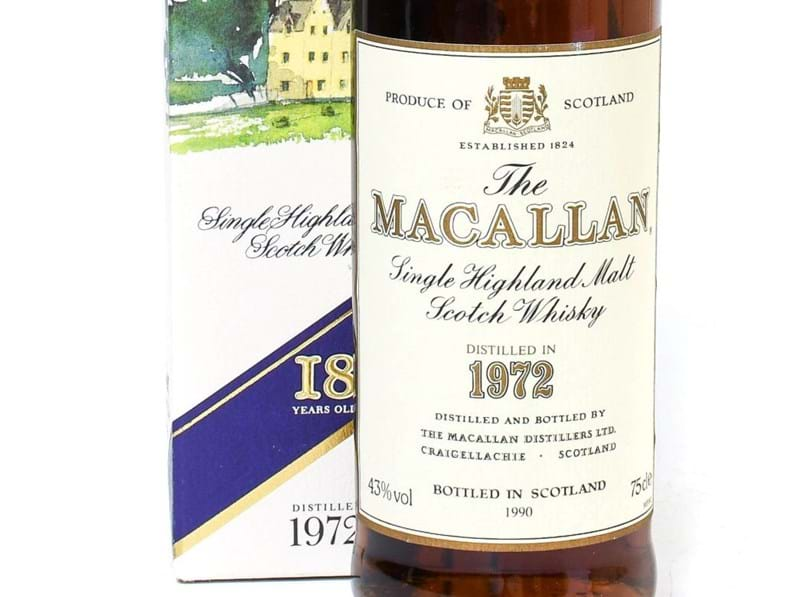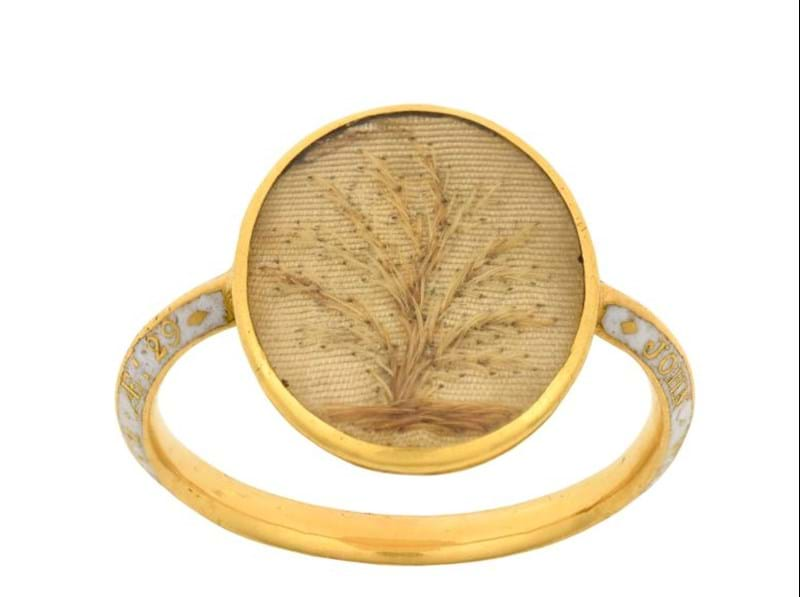A Private Collection of Royal Crown Derby Paperweights are coming up for sale in the Antiques and Interiors Sale on 11th March. The collection, which is being sold in 56 lots, includes highlights such as a gold stopper Golden Eagle by Hugh Gibson. Sold with a print of the original design by Tien Manh Dinh, the rare model is offered with an estimate of £500-700 (plus buyer's premium). Also of note is a set of three gold stopper deer comprising Sherwood Stag, which was made for Connaught House, Sherwood Hind and Sherwood Fawn (estimate: £200-400), and a goldstopper group comprising Koala and Baby, Kangaroo, Crocodile, Duck-Billed Platypuss and Otter (£150-200).
For nearly thirty-five years Royal Crown Derby has produced an enormously popular line of collectable paperweights, modelled on every animal imaginable - from alligators to zebras - all decorated in their distinctive colour palette based on red, blue and gold.
Historically, paperweights were made of glass - it was thought that porcelain was too delicate for practical everyday use. However, Royal Crown Derby Art Director, Jo Ledger, thought that a useful and decorative tool could be made from porcelain. It was decided to model the new range on animals and birds, and in keeping with the pottery’s long history the decoration was based around their traditional Imari pattern. The Imari pattern emerged in the late 18th Century, based on the Japanese ceramics that were enormously popular at the time. Golds, blues and reds were painted over a white body to produce an intricate and richly decorated surface.


